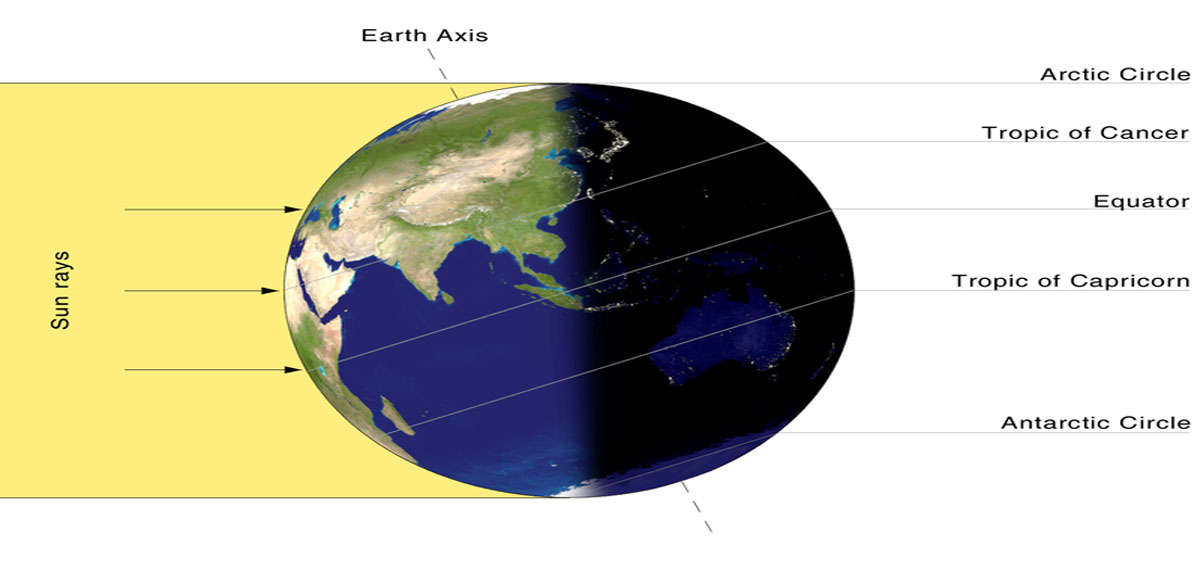A solstice is an astronomical event that occurs twice each year as the Sun reaches its highest or lowest excursion relative to the celestial equator on the celestial sphere. As a result, on the day of the solstice, the Sun appears to have reached its highest or lowest annual altitude in the sky above the horizon at local solar noon. The word solstice is derived from the Latin sol(sun) and sistere (to stand still), because at the solstices, the Sun stands still in declination; that is, the seasonal movement of the Sun’s path (as seen from Earth) comes to a stop before reversing direction. The solstices, together with the equinoxes, are connected with the seasons. In many cultures the solstices mark either the beginning or the midpoint of winter and summer.
The term solstice can also be used in a broader sense, as the date (day) when this occurs. The day of the solstice is either the longest day of the year (in summer) or the shortest day of the year (in winter) for any place outside of the tropics.
The longest day of 2013 is finally here — but this year, it comes with a twist.
While the solstice in the northern hemisphere traditionally falls on June 21 — and this year it will occur on that date at 1:04 a.m. EDT — it will begin on Thursday, June 20, for parts of the western U.S., according to the website of the Clark Planetarium. The time of the solstice depends upon your position on Earth and, as a consequence, where you are in relation to the sun.
The summer solstice occurs when Earth’s axis is the most tilted toward the sun — the angle is known as “maximum axial tilt.” As a consequence of this specific orientation, the sun rises at its most northeasterly point along the horizon and also sets at its most northwesterly point in the northern hemisphere.
The solstice isn’t the only big celestial event this week. Skywatchers are gearing up for the arrival of the 2013 supermoon, which is set to peak June 22-23 and deliver the biggest, brightest moon of the year.


